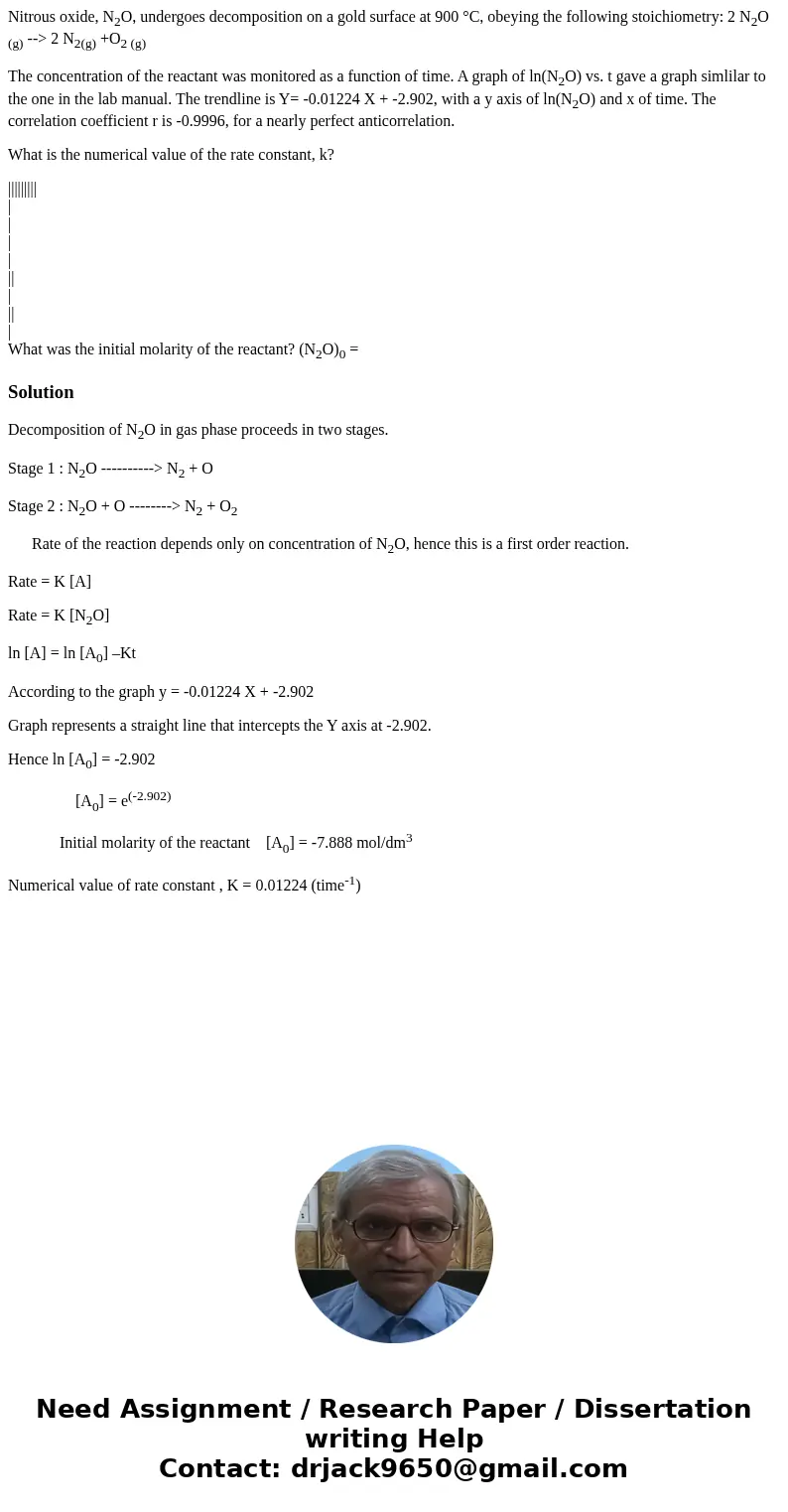Nitrous oxide N2O undergoes decomposition on a gold surface
Nitrous oxide, N2O, undergoes decomposition on a gold surface at 900 °C, obeying the following stoichiometry: 2 N2O (g) --> 2 N2(g) +O2 (g)
The concentration of the reactant was monitored as a function of time. A graph of ln(N2O) vs. t gave a graph simlilar to the one in the lab manual. The trendline is Y= -0.01224 X + -2.902, with a y axis of ln(N2O) and x of time. The correlation coefficient r is -0.9996, for a nearly perfect anticorrelation.
What is the numerical value of the rate constant, k?
|||||||||
|
|
|
|
||
|
||
|
What was the initial molarity of the reactant? (N2O)0 =
Solution
Decomposition of N2O in gas phase proceeds in two stages.
Stage 1 : N2O ----------> N2 + O
Stage 2 : N2O + O --------> N2 + O2
Rate of the reaction depends only on concentration of N2O, hence this is a first order reaction.
Rate = K [A]
Rate = K [N2O]
ln [A] = ln [A0] –Kt
According to the graph y = -0.01224 X + -2.902
Graph represents a straight line that intercepts the Y axis at -2.902.
Hence ln [A0] = -2.902
[A0] = e(-2.902)
Initial molarity of the reactant [A0] = -7.888 mol/dm3
Numerical value of rate constant , K = 0.01224 (time-1)

 Homework Sourse
Homework Sourse